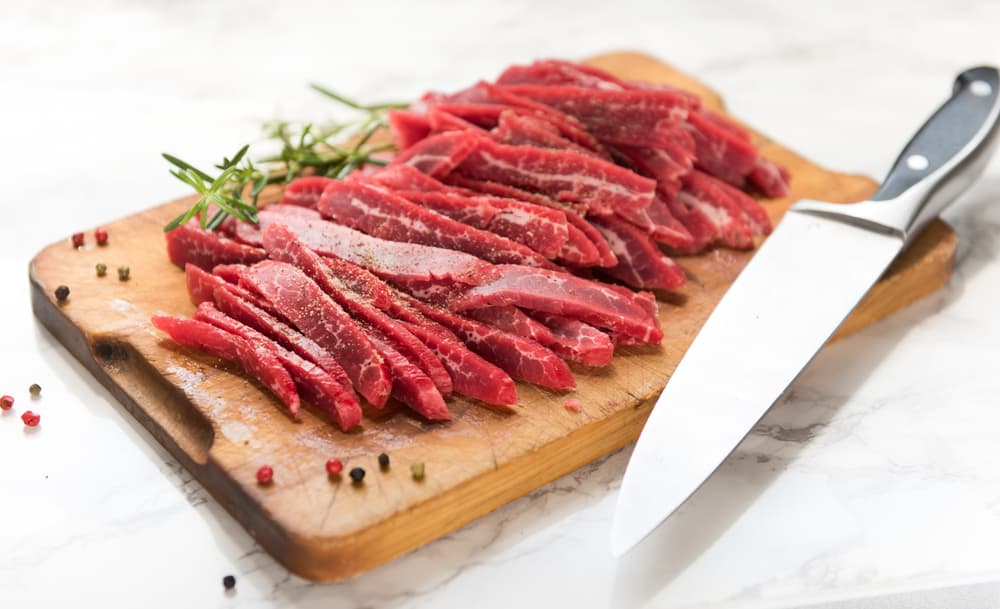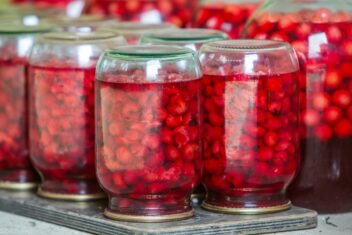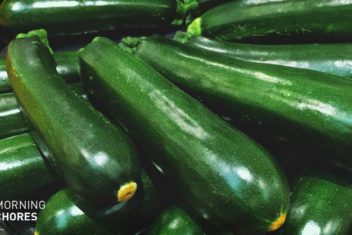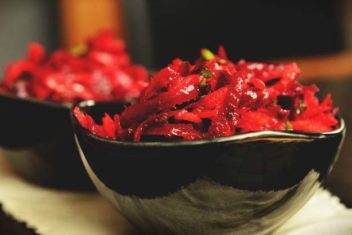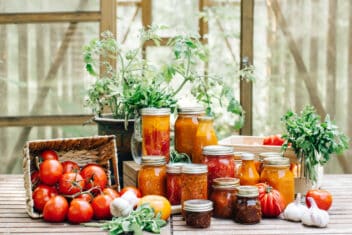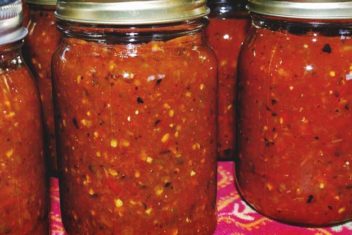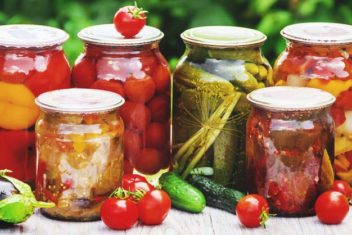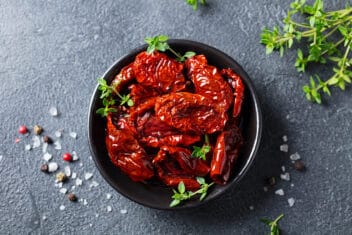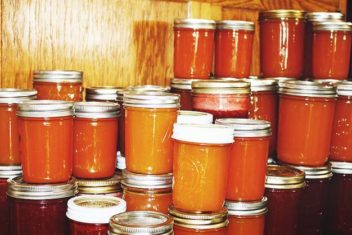Losing power is a regular threat on the homestead. On top of that, many of us don’t have endless room in our freezers. What happens when we have a ton of meat from hunting or the fall slaughter? There are many ways of preserving meat.
When you’re storing meat without electricity, you need to preserve your meat. Otherwise, you’d end up with a cupboard full of foul-smelling, rotten food.
The most common methods of preserving meat without a refrigerator are canning, curing, salting, dehydrating, and smoking, but we have lots more ideas, coming up.

1. Dehydrating
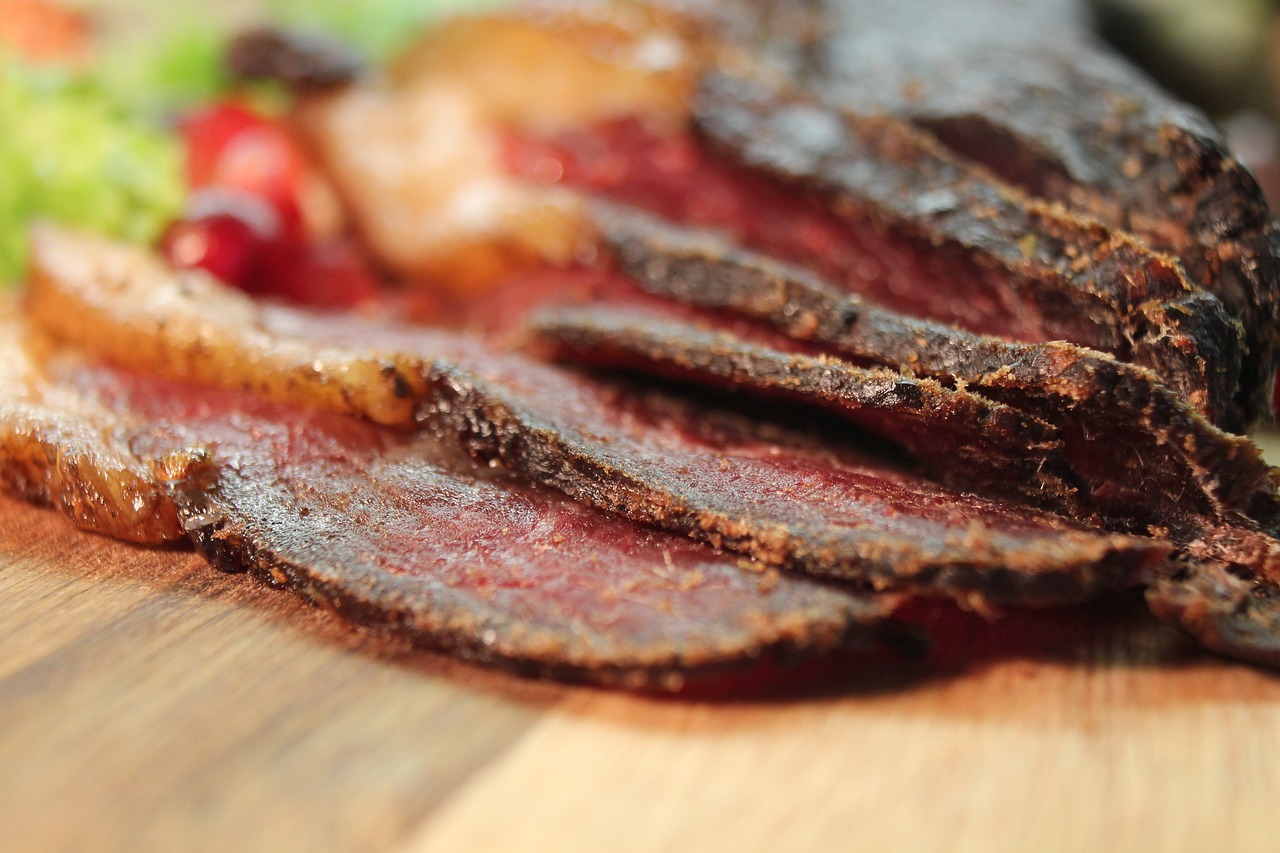
Dehydrating is ideal for preserving meat if you want to use as few chemicals as possible. The main goal of dehydrating is to suck the moisture out of the meat, so there is no chance of microbial action. Even though the moisture is removed, the flavor is still strong and delicious.
To dehydrate your meat, you’ll need to cut the meat into chunks or slices. Traditionally, people left meat out to dry in the sun, so the nutrients would remain but the moisture would evaporate.
Before you dry your meat, cook it to an internal temp of 165°F to kill any pathogens. Then, you can dry it. The ideal temperature for dehydration is between 130-140°F and may take up to six hours. Use a food dehydrator or your oven if it can go that low.
Dehydration is simple and cost-effective and can be used for large amounts of meat if you have the space.
2. Pemmican
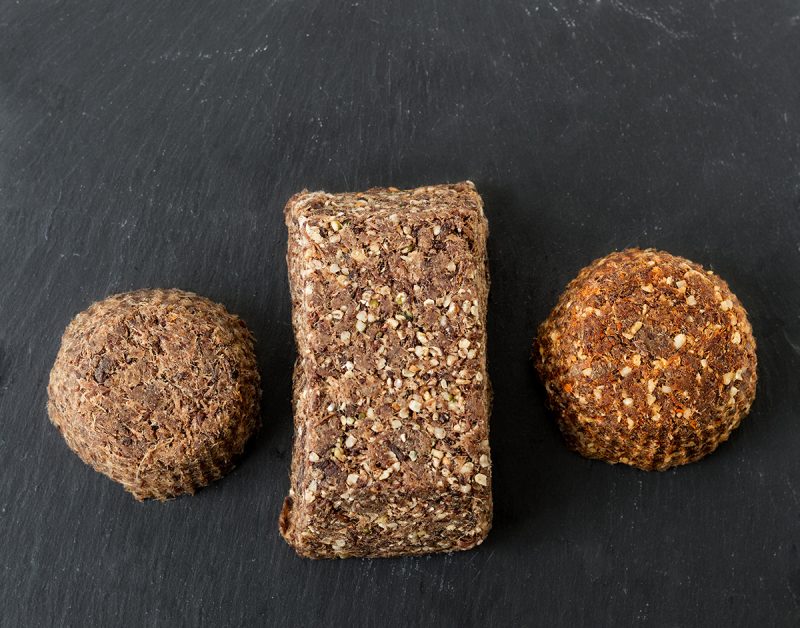
Pemmican is a method of storing meat that has been used for centuries by cultures such as indigenous people, polar explorers, and the military. This method of preserving meat is perfect if you need something quick you can grab for a hike or camping.
Pemmican is full of flavor, highly nutritious, and simple to store, which makes it an ideal choice for homesteaders that don’t have access to electricity.
Your first step in preparing the meat for pemmican is to remove the fat from the meat and dehydrate it. To keep the meat from turning rock hard, you should dry the meat at a low temperature.
After this, grind the meat into a powder and melt the fat. Combine the fat with the dried meat powder. Blend in some dried berries like blueberries to make it a wholesome meal. Once you blend the dried meat, berries, and fat, pour it onto a tray and wait for the pemmican to become firm.
You can keep pemmican for a good long time but put it in a cool, dry place. It’s the perfect snack for long days in the field or when hiking.
3. Salt Curing
Do you have salt in your cupboard? Then, you don’t need anything else to keep meat fresh without electricity.
Salt is one of the basic ingredients used for curing meat as it helps prevent the growth of microorganisms. Quickly cure your meat with salt by covering the whole surface with a half-inch salt and leave it until the juices have evaporated.
Cure ham, roasts, and shoulders with salt at a temperature of 35-50°F. The larger your cut of meat, the higher the temperature should be.
When done, the salted meat should be matte and feel dry to the touch. It should lose about 35% of its weight.
4. Canning
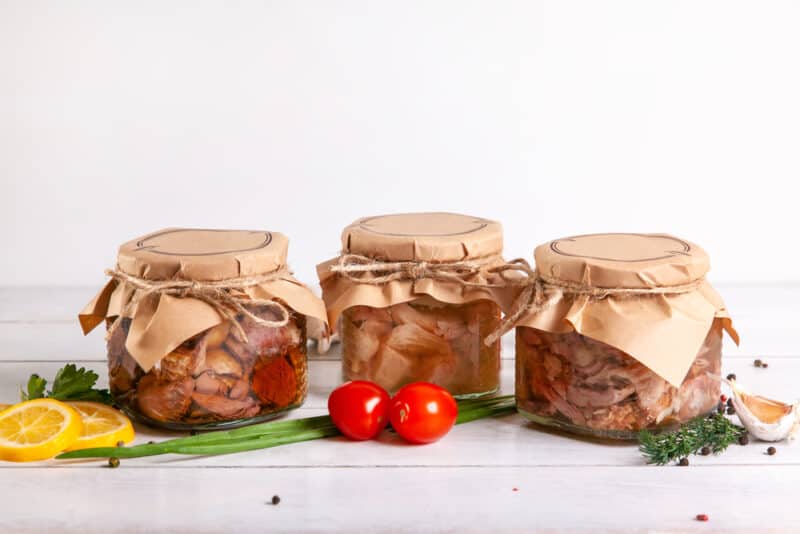
Canning is another great method of storing fresh meat if you don’t have electricity, and people have been using it for years as an alternative to electrical storage. All you need is sterilized canning jars and a pressure cooker.
The simple steps for canning meat is to cook the meat and then fill the jars and seal the lids. Place the jars in a pressure canner and cook according to the canner’s recommended time.
5. Biltong
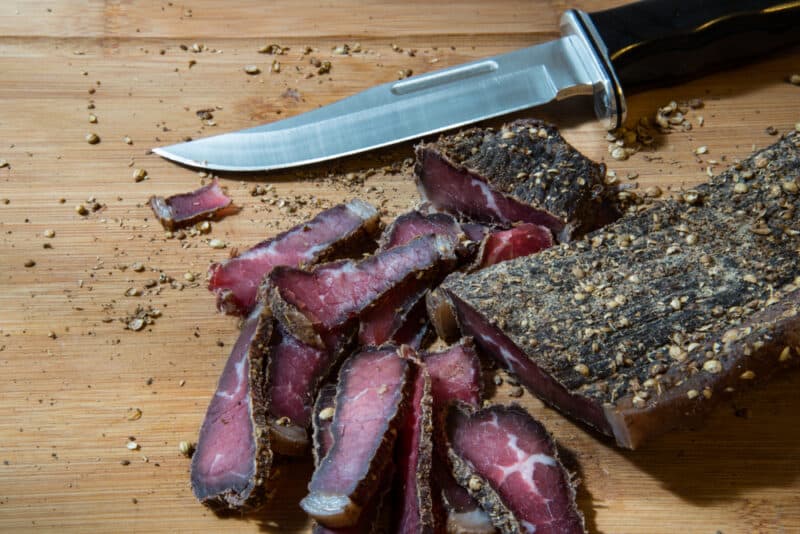
South Africa has been making biltong for years. It differs slightly from other preservation techniques, such as canning or curing with salt. At first glance, most people think it’s jerky, but the method of creating biltong uses vinegar and then air-drying.
For extra flavor, you can add herbs and spices like black peppercorns, cloves, brown sugar, or rock salt. You can also make biltong more fatty or crumbly, depending on your taste.
To make, you must first salt the meat and then place it in vinegar to cure. Next, you spice it and hang it to dry.
The end product is great for people looking for low-carb diets or a quick snack during gardening tasks. Bring it along for a hike or have it as a lunch snack between planting or looking after your garden.
6. Preserving With Lard
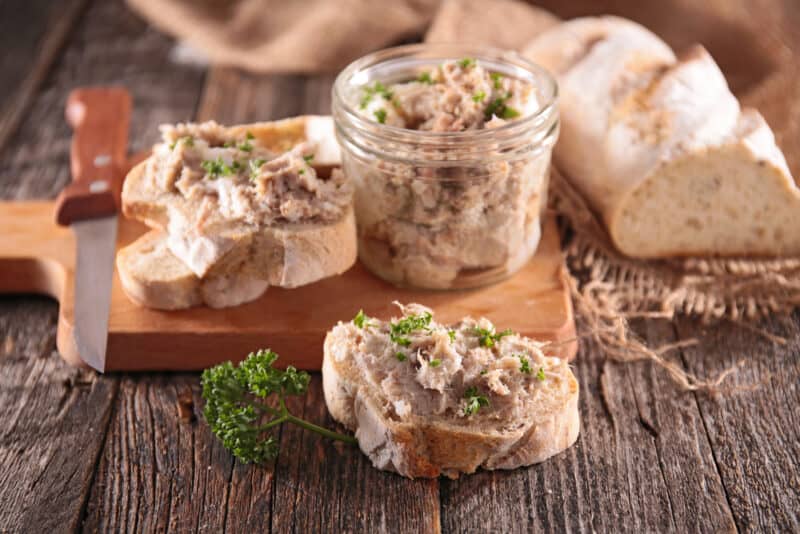
Lard is an excellent resource for preserving fatty meat. To preserve your meat this way, gather a crockpot, lard, and pieces of meat.
Once you have the ingredients and tools, you can place the meat in the crockpot and layer it with lard. So, you don’t need to invest much money in tools or resources; it will keep your meat fresh and clean for consumption.
There are a few techniques you can use:
1. Confit
Confit is a common method that originated in France to preserve food, such as meat, fruit, and vegetables.
To confit, you generally salt the meat and then cook it at a low temperature so that it renders down. This leaves you with marvelously moist meat that can store for months.
2. Rillettes
Before the invention of the refrigerator, rillettes was one of the standard methods for preserving meat and keeping it fresh for later. You can create rillettes by slowly cooking the meat in its own fat. You’ll need to cook the meat for up to 10 hours on a low heat.
Then, you need to shred it, add salt, and pack it into small pots. Cover with some fat that cooked down during the cooking process or with some fat like lard.
3. Terrine
This method results in a soft, slightly chunky product that you spread on bread or use in various cooking recipes. To make a terrine, which is named after the rectangular pan you cook it in, you mince up all the ingredients and combine them with the spices. Cover with fatty meat like rashers.
Roast it all together in the terrine, which you place in a pan filled with water. Cool it for 24 hours in the fridge. Generally, you can store this for up to a month or so, though it’s recommended that you keep it in the fridge unless you decide to can it.
7. Smoking Meat
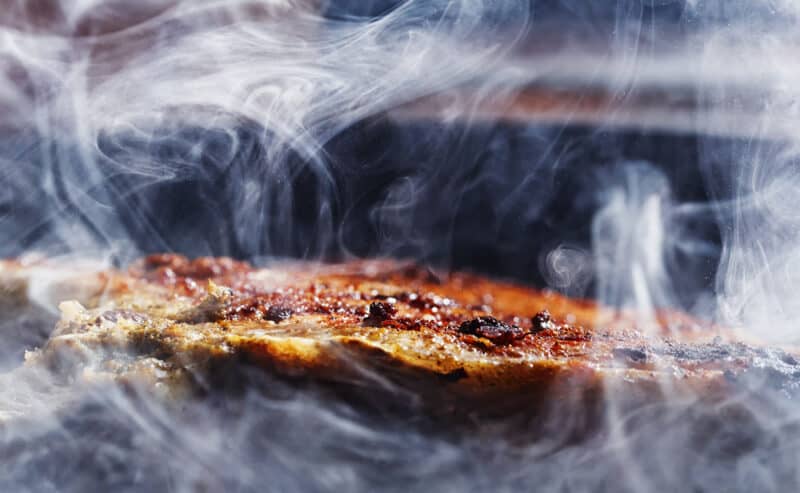
Sometimes the simplest solution is the most obvious. Not only is smoking perfect for preserving meat, it smells heavenly while you’re doing it.
If you ask 100 people the best way to smoke meat, you’ll get 100 different answers. The fundamentals are creating smoke to flavor the meat and cooking for a long time at a low temperature.
Some people use fancy smokers, some have smoking huts, and some just use the barbecue grill.
